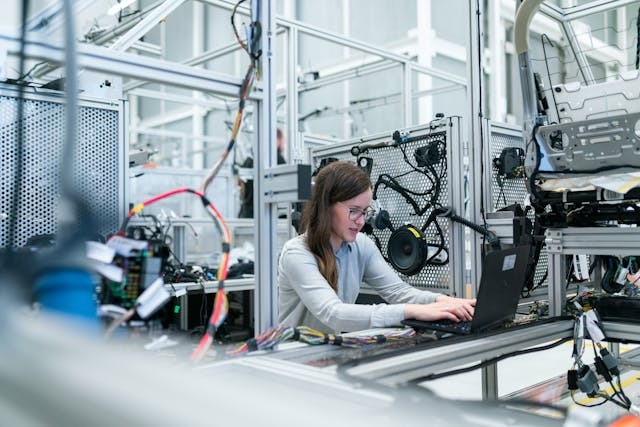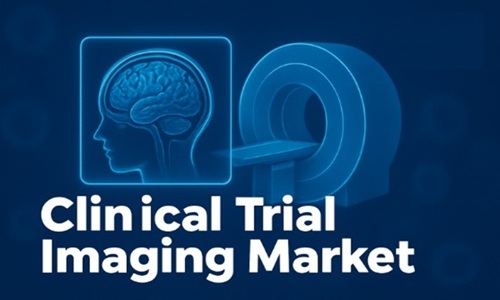If you’re thinking of starting your own business or want to expand your business investment, consider the scientific field. In this guide, we’ll explore why investing in this area of business can be so lucrative, and the potential it holds for the future.
Cutting-Edge Innovations
Starting a business in the science industry places you at the forefront of innovation. The scientific field is synonymous with groundbreaking discoveries and technological advancements. By embarking on this entrepreneurial journey, you have the opportunity to contribute to the creation of new technologies, products, and methodologies that can revolutionise various sectors. Imagine being part of the team that develops the next life-saving drug, a revolutionary renewable energy solution, or a cutting-edge piece of technology. The thrill of innovation and the satisfaction of contributing to significant advancements make the science industry an incredibly exciting and rewarding field to enter. When you’re launching a business in the scientific sector, you need to ensure you invest in some high-quality laboratory equipment like a raman spectrometer to ensure your business operates effectively and productively.
Addressing Global Challenges
The world faces numerous pressing issues, from climate change to pandemics, and the science industry is pivotal in addressing these challenges. By starting a business in this sector, you can directly contribute to finding solutions to some of the most critical problems humanity faces. Whether it’s through developing sustainable technologies, advancing medical research, or improving agricultural practices, your business can make a tangible difference. This sense of purpose and the potential to enact positive change can be incredibly fulfilling and can serve as a powerful motivator in your entrepreneurial journey.
Access to Funding and Resources
The science industry is often well-supported by both governmental and private entities. There are numerous grants, subsidies, and funding opportunities available to businesses in this sector, particularly those working on innovative and impactful projects. Additionally, finding investors who are looking to invest in science-based start-ups can be successful due to the high potential for growth and societal impact. Access to these resources can significantly ease the financial burden and help your business thrive.
High Market Demand
The demand for scientific innovations is ever-growing. As societies advance, there is a continuous need for new technologies, medical advancements, and sustainable solutions. This creates a robust market for science-based businesses. For instance, the biotechnology sector is experiencing rapid growth due to increasing healthcare demands and advancements in genetic research. Similarly, the renewable energy market is booming as the world shifts towards more sustainable practices.
Collaboration and Networking Opportunities
The science industry is inherently collaborative. Scientists, researchers, and businesses frequently work together to achieve common goals. This collaborative nature extends to scientific entrepreneurs, providing ample opportunities for networking and partnerships. By starting a business in this field, you can connect with leading experts, research institutions, and other businesses. These collaborations can lead to valuable insights, shared resources, and joint ventures that can propel your business forward. Attending industry conferences, participating in research consortiums, and engaging with professional associations can significantly expand your network and open up new opportunities for growth and innovation.
Intellectual Property and Competitive Advantage
One of the significant benefits of starting a business in the science industry is the potential to develop and secure intellectual property (IP). Patents, trademarks, and copyrights can provide substantial competitive advantages and long-term value for your business. Developing proprietary technologies or processes can set you apart from competitors and establish your company as a leader in the field. Additionally, owning IP can attract investors and partners, as it demonstrates innovation and potential for high returns. Protecting your scientific discoveries through IP can thus be a crucial factor in the success and sustainability of your business.
Contribution to Education and Knowledge
Starting a business in the science industry also allows you to contribute to education and the broader dissemination of knowledge. Many scientific businesses collaborate with universities and educational institutions, providing resources, expertise, and opportunities for students and researchers. By fostering these relationships, you can help train the next generation of scientists and innovators. Additionally, your business can play a role in public education, raising awareness about important scientific issues and advancements.
Personal and Professional Growth
The dynamic and challenging nature of the science industry provides ample opportunities for personal and professional growth. As an entrepreneur in this field, you will constantly be learning and adapting to new developments and discoveries. This continuous learning process can enhance your skills and knowledge, making you a more effective and innovative leader. Additionally, the challenges you face in starting and growing your business can build resilience, managerial problem-solving abilities, and strategic thinking.
Societal Impact and Legacy
Starting a business in the science industry offers the unique opportunity to leave a lasting legacy. Scientific advancements often have long-term impacts on society, shaping the future and improving the quality of life for generations to come. By contributing to these advancements, you can create a legacy of innovation and positive change. Whether it’s through developing life-saving medical treatments, creating sustainable technologies, or advancing our understanding of the natural world, your business can have a profound and lasting impact.
Diverse Career Opportunities
The science industry encompasses a wide range of disciplines and sectors, from biotechnology and pharmaceuticals to environmental science and information technology. This diversity provides numerous opportunities for specialisation and career growth. By starting a business in this industry, you can choose a niche that aligns with your interests and expertise, ensuring that your work is both engaging and fulfilling. Additionally, the interdisciplinary nature of the science industry allows for collaboration across different fields, leading to innovative solutions and new business opportunities. This diversity not only makes the industry exciting but also offers a wide array of pathways for your business to explore and grow.
Starting a business in the science industry offers numerous compelling reasons. From the opportunity to innovate and address global challenges to access to funding and the potential for significant societal impact, the science industry provides a rich and rewarding landscape for entrepreneurs. By embracing these opportunities, you can build a successful and fulfilling business that not only thrives in the market but also contributes to the advancement of knowledge and the betterment of society.


















